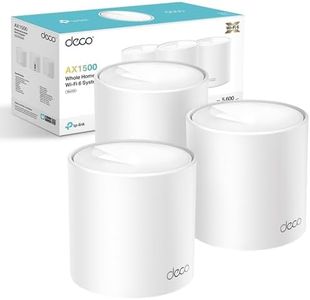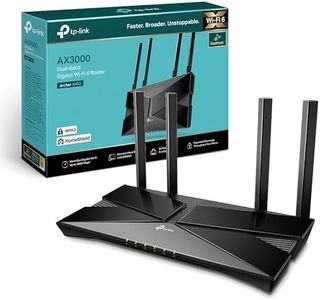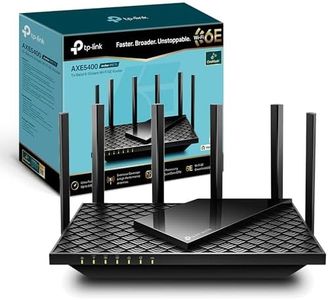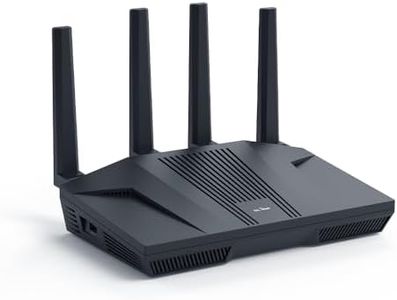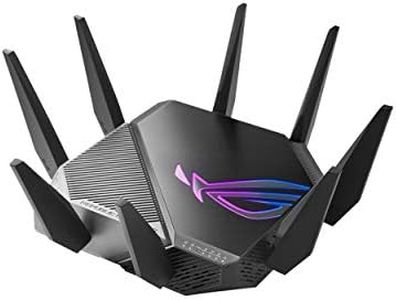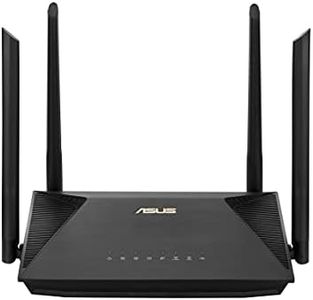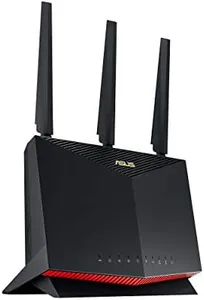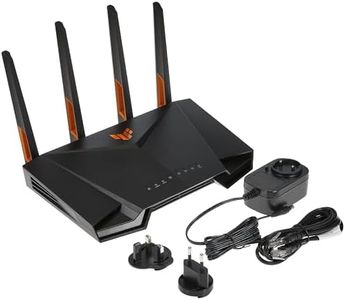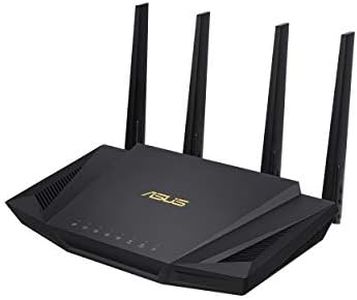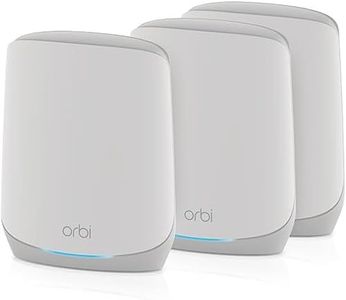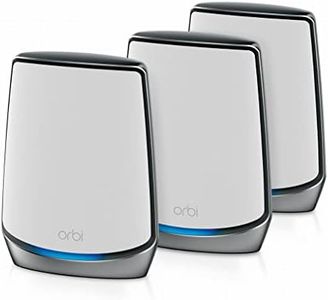We Use CookiesWe use cookies to enhance the security, performance,
functionality and for analytical and promotional activities. By continuing to browse this site you
are agreeing to our privacy policy
10 Best Wifi 6 Routers
From leading brands and best sellers available on the web.Recommended lists
Buying Guide for the Best Wifi 6 Routers
When choosing a WiFi 6 router, it's important to consider your specific needs and the environment in which the router will be used. WiFi 6, also known as 802.11ax, is the latest standard in wireless networking, offering faster speeds, better efficiency, and improved capacity compared to its predecessors. This makes it ideal for homes with multiple devices and for users who stream high-definition content or play online games. To find the best WiFi 6 router for you, consider the following key specifications and how they align with your usage patterns and home setup.SpeedSpeed is a crucial factor when selecting a WiFi 6 router, as it determines how quickly data can be transferred over your network. WiFi 6 routers offer higher maximum speeds than previous generations, often exceeding 1 Gbps. However, the actual speed you experience will depend on your internet service plan and the capabilities of your devices. If you have a high-speed internet plan and multiple devices that require fast connections, look for a router with higher speed ratings. For general browsing and streaming, a mid-range speed should suffice.
CoverageCoverage refers to the area that the router's signal can effectively reach. WiFi 6 routers typically offer better coverage than older models, thanks to advanced technologies like beamforming and MU-MIMO. If you live in a large home or have multiple floors, consider a router with extended coverage capabilities or a mesh system that can provide consistent signal strength throughout your space. For smaller homes or apartments, a standard coverage range should be adequate.
Number of BandsWiFi 6 routers often come with dual-band or tri-band options. Dual-band routers operate on two frequencies (2.4 GHz and 5 GHz), while tri-band routers add an additional 5 GHz band. More bands can help manage network traffic more efficiently, especially in homes with many connected devices. If you have a busy household with numerous devices, a tri-band router might be beneficial. For less congested environments, a dual-band router should be sufficient.
Device CompatibilityDevice compatibility ensures that your devices can take full advantage of the WiFi 6 features. While WiFi 6 is backward compatible with older devices, to experience the full benefits, your devices should also support WiFi 6. If you have newer smartphones, laptops, or smart home devices, they are likely compatible. If most of your devices are older, you may not see significant improvements, but a WiFi 6 router can future-proof your network as you upgrade devices.
Security FeaturesSecurity features are essential to protect your network from unauthorized access and cyber threats. WiFi 6 routers often come with advanced security protocols like WPA3, which offers stronger encryption and better protection for your data. Consider routers that offer additional security features such as guest networks, parental controls, and automatic firmware updates. If you have sensitive data or children using the internet, these features can provide peace of mind.
Additional FeaturesAdditional features can enhance your network experience and provide extra convenience. Some WiFi 6 routers offer features like Quality of Service (QoS) settings, which allow you to prioritize certain types of traffic, or built-in smart home integration. Consider what additional features might be beneficial for your lifestyle. For instance, if you frequently stream or game, QoS can help ensure a smooth experience. If you have a smart home setup, look for routers that integrate seamlessly with your devices.
